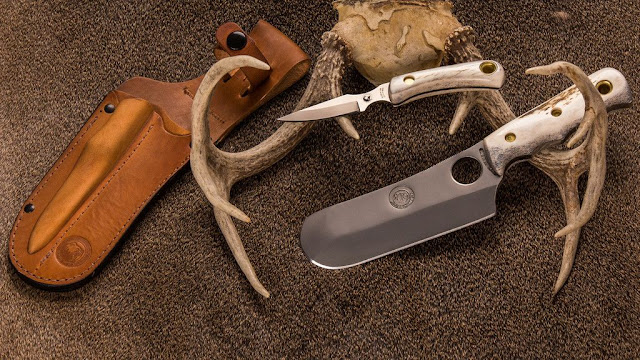History of Damascus Steel
The iron metal in Damascus was a type of metal used in the manufacture of oaks in the Middle East made of wootz steel imported in India. These swords are viewed by different patterns of girdles and a pillow that reminds them of flowing water. Such blades were considered to be difficult, arguing against breakdown and being able to be respected at the edge, safe.
The metal is called Damascus, the Syrian city. It may refer to a sword made directly or commercially in Damascus, or it may refer to the feature of normal patterns, compared with Damascus's fabrics (called Damascus).
The first method of manufacturing Damascus is not popular. Due to the diversity of materials and production techniques, modern metal replacement efforts have failed completely. Despite this, several people in modern times have claimed that they have found ways in which real-life Handmade damascus hunting knives has been made.
Damascus's history and history have given many myths, such as the ability to break the bar of firearms or to cut the hair falling across the road. A German study team published a report in 2006 revealing nanowires and carbon nanotubes into a mine from Damascus. This is compiled by the National Geographic and the New York Times. Although some modern-day sophisticated instruments come out without these swords, chemical reactions in production make unique metals in their time, as Damasech steel was extremely powerful and at the same time. During the smell process to obtain Wootz metal plants, body and woody biomass are used as carburizing additives and certain rich iron types in microalloying structures. The bees will now be operated and operated in Damascus, and research now indicates that carbon nanotubes can be found on the green hills, indicating how nanotubes are made of iron. Some experts expect to find such nanotubes as numerous as they are closely analyzed.
The Damascus dams were made in the Middle East of wootz metal parts that were imported into India, and Sri Lanka. Archaeological evidence suggests that the process of an iron crucible started in modern Tamil Nadu before the start of the Common Era. Arabs begin Indian wootz steel in Damascus, where the armory grows. From the third to the 17th century, India sent ingots to the Middle East.
The production of portable spears slowly diminished, almost 1750, and the process lost the steel. Numerous modern-day trends have tried to explain this reduction, including the decline in commercial roads to provide needed metals, blankets and dirt industry, loss of information on secretive and lack of transfer, marketing industry in India by British Britain, or the combination of all the above.
The original Damassech steel or wootz was imported from India to Damascus, where skilled craftsmen learned how to put swords. Due to the abundance of metal trade, sufficient traffic disruptions could end the production of steel Damascus and ultimately lead to the loss of this route in India. Also, the need for the main tungsten or vanadium pollutants within the iron ingredients is likely to be absent if they are available in various production areas or are excluded from the following components. The hot bicycle control process after the start of the start of the heat may be lost, thus preventing the final pattern of the metal drum from occurring.
The discovery of carbon nanotubes in the metal structure of Damascus supports this process since the dissolution of carbon nanotubes is likely to be caused by a certain process that may be difficult to repeat when the production process or used materials are widely used.



Comments
Post a Comment